Hi everyone,
How are you? I hope you are well.
In today's post, I want to share with our Architecture and Design community one of my favourite buildings from my recent trip to Buenos Aires. The place is called Palacio de Aguas Corrientes which literally translates as The Water Company Palace. Based on the information from this website (1), it is a water pumping station that was built in an early stage of the city's development in 1877 by Swedish Argentine architect Carlos Nyströmer and features an eclectic blend of Second French Empire architecture and some Central-European and Renaissance influences (2).

When I first saw the building, I couldn't believe they designed the whole thing just to be a water pumping station. But according to our tour guide, the reason they built it like a palace because it is located within one of the wealthy part of the city at that time and the neighbours didn't want to have an industrial structure look-alike that would ruin the value of the neighbourhood so they decided to build the facade to look like a palace and to represent modernity.
She also explained that the construction of this building responded to a clear need of the city to have a better water treatment system. In the past people got water from rivers or from wells, so they built this complex so they can pump the water from the top. At that time, the station was one of the highest points in the city which is no longer true.
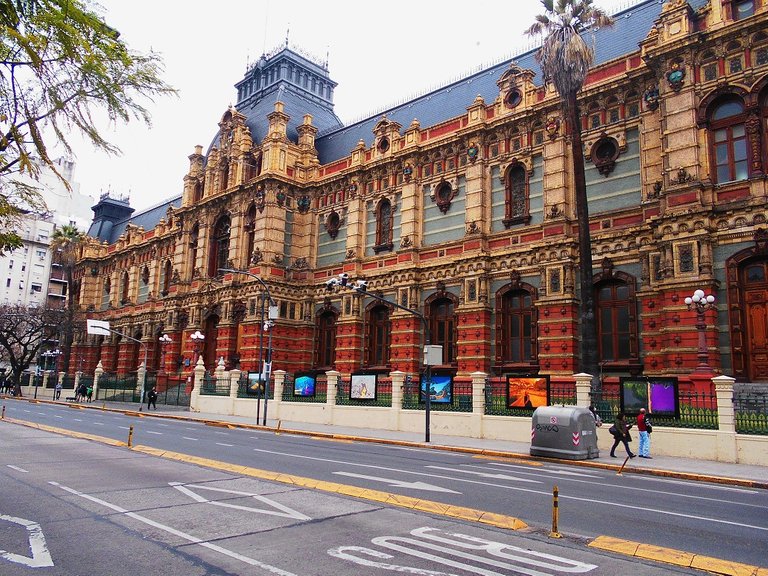
Before getting inside the water plant, we spent quite some time at the entrance of the building to learn about the architecture and design of the facade. We learned from our tour guide that the facade was covered with over 300,000 tiles imported from Royal Doulton, a British ceramics manufacturer. Up until now they are still in good condition and they haven't had to replace any of that. Along the facade, there were some shields representing all the provinces in Argentina.
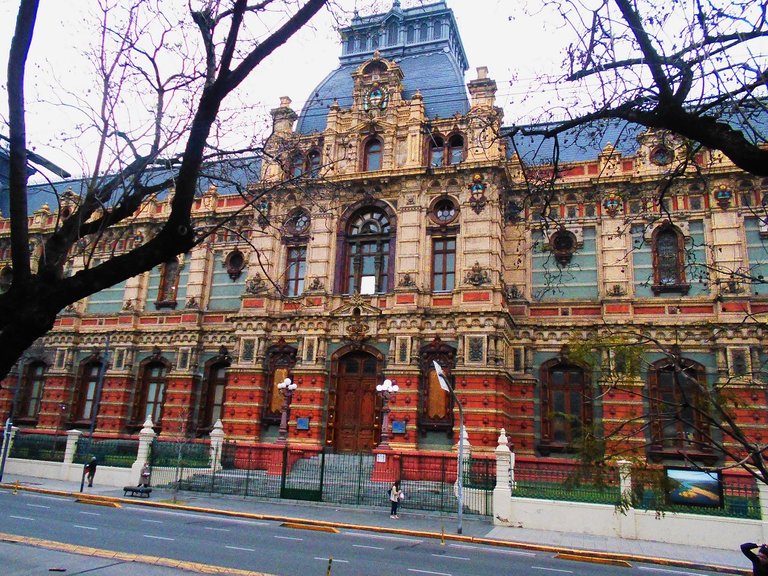
Shields representing all the provinces in Argentina
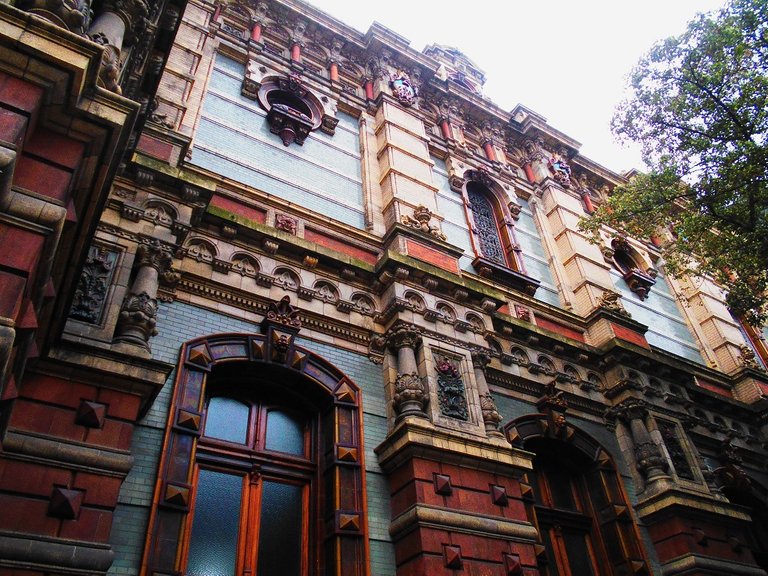
Some of the window beams are made of local wood
Inside the Placio de Aguas Corrientes
To be honest, I was a bit lost when we visited inside this buillding because it was not easy for my partner to translate everything for me. But I do remember one interesting thing about the structure of the building. According to our tour guide and this source of facts (2), there are 180 metallic columns which are arranged in a checkerboard pattern to support the structure of the three top floors with twelve tanks that could store 72,000 tons of drinking water. And all the steel works they used here were imported from Belgium and they even hired Belgium engineers to work on this project. My partner's Mum is from Belgium so we are so excited to know that.

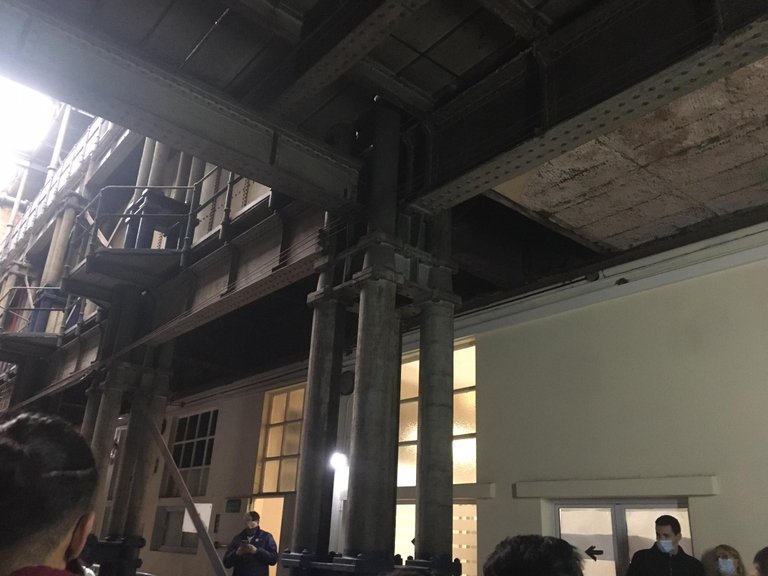
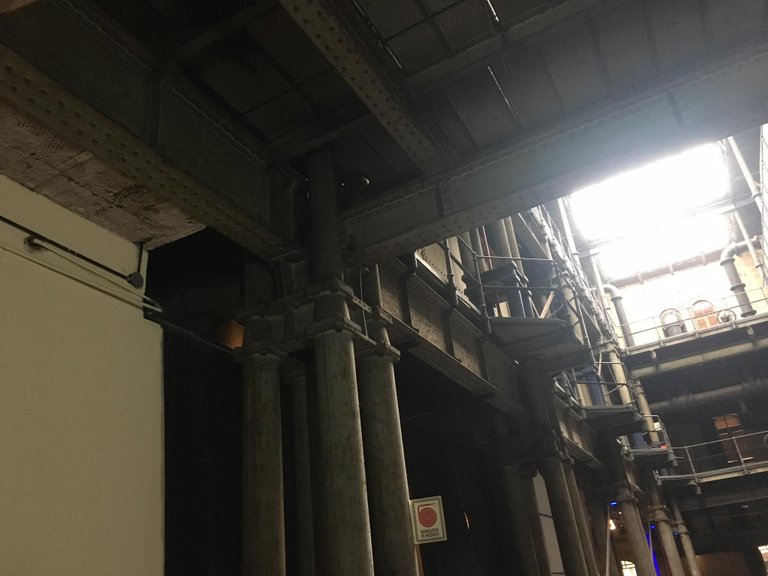
The pipes are no longer working and now they used the spaces for offices and architecture heritage.
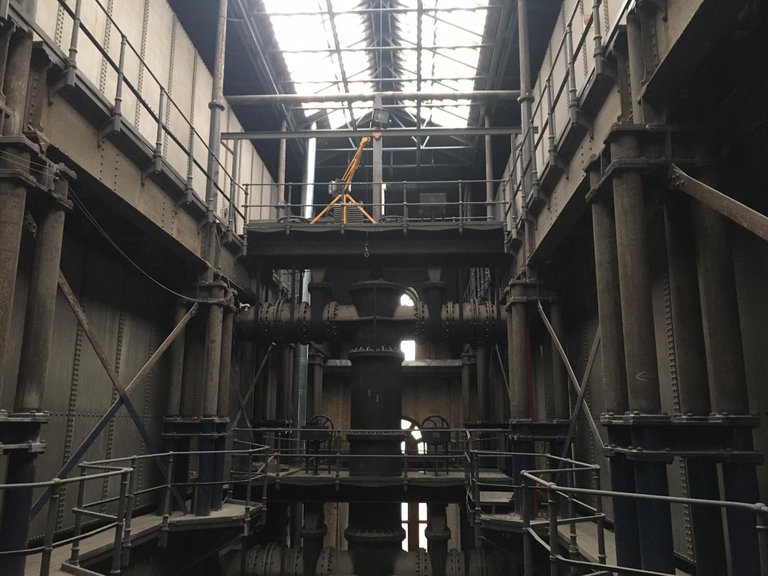


This is considered the main pipe of the building. This pipe can pump the water in and out of the tank. One interesting fact according to our tour guide is that after they built it, they found out that they lost the technical blueprint of the pumping station so they didn't know very well how everything works so they thought the pipe can only work one way.
Inside one of the water tank
As I mentioned, it is no longer working so we have a privilege of getting inside one of the water tank and see how it is to be inside the "giant water tank".

Do you wonder what this is for? Our tour guide said this is built to reduce pressure of the water and to keep the tanks working together and to control the waves within the tank. And if you look further above, there is a small gap between the ceiling and the walls. It is to let the air out otherwise the water keep pressuring the air inside and it can explode. This reminds me about my childhood when I used to help my father to clean our water tank. The tank we had at home is no where near this big but we had a very similar design with small gap and support system at the bottom of the tank.
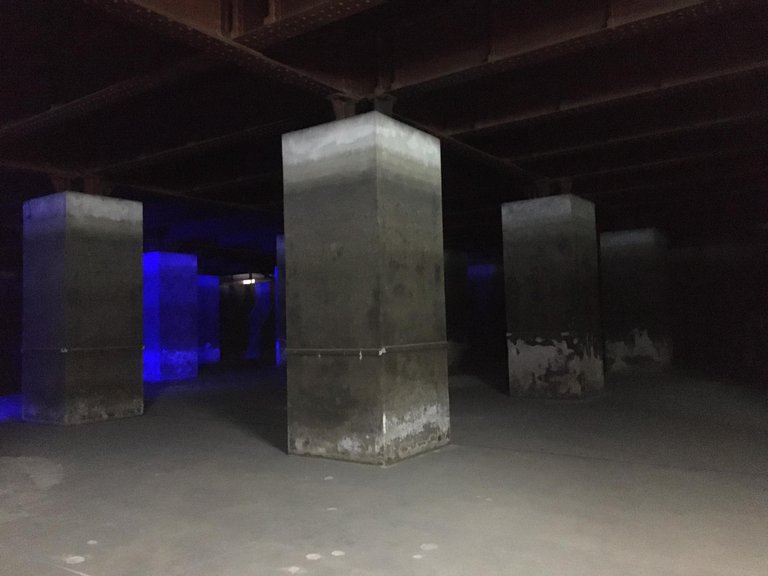
Do you see the trace of water? In the column we can see gradient colours from dark to light. It is because of water in contact with the materials and you can tell how high the water can go up in here.
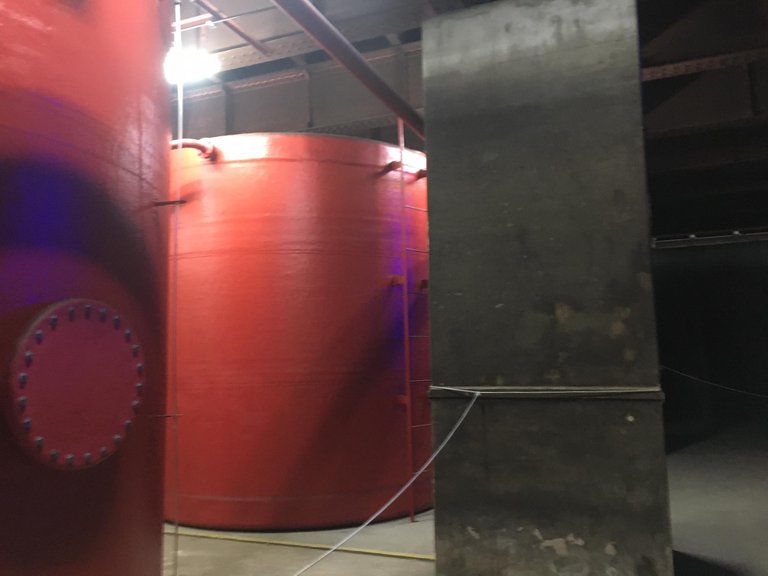
The red tanks are still in use for fire emergency.

As a result of the building's history and the institution's heritage, some of the second floor's halls have been turned into a heritage museum. Unfortunately, the museum didn't open at that time because of the pandemic so I could only take some photos at the hallway.
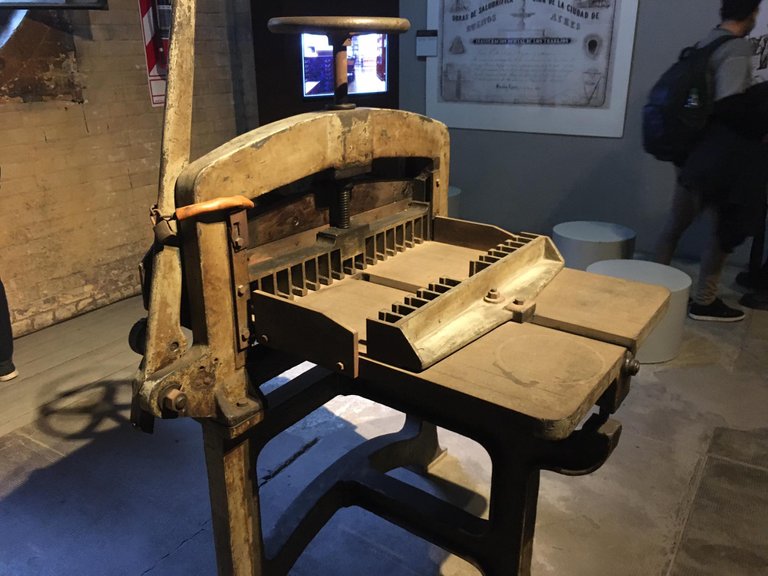
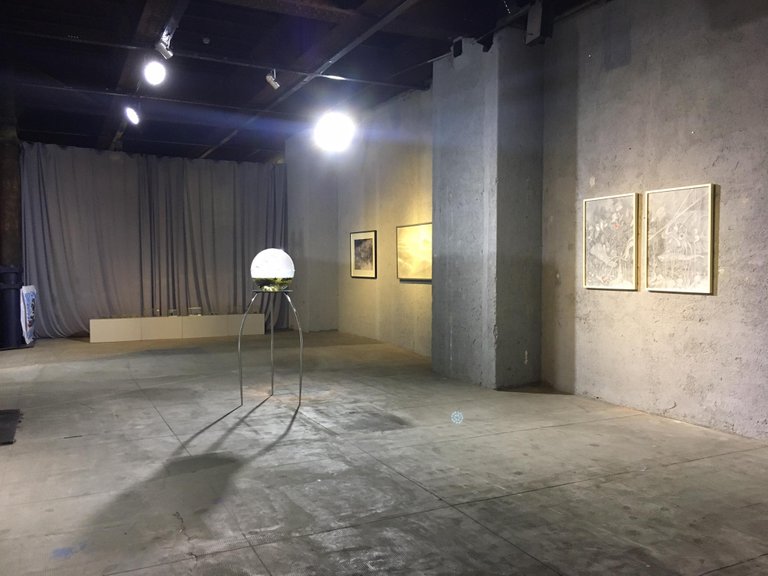
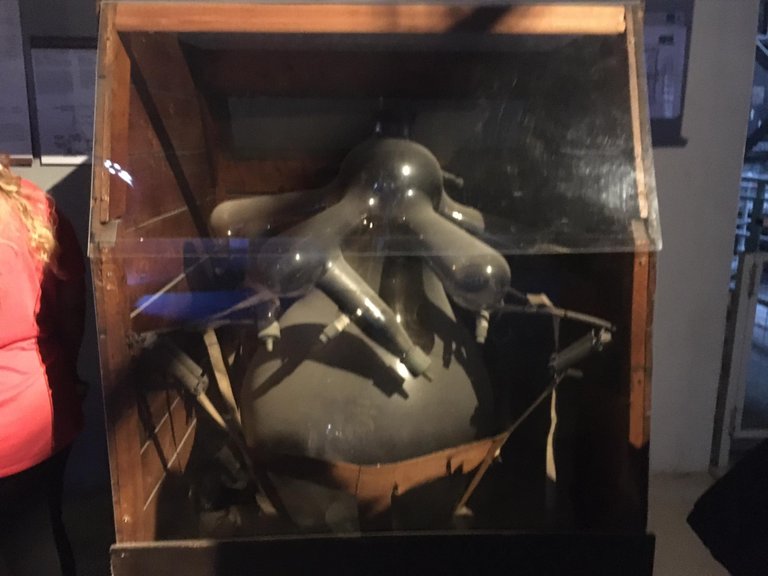
All of my partner's life, he used to pass by this building because it is located on one of the main avenues but he has never been inside. So this time, he took me and his mom to go visit it. The tour is free for everyone, whether you are an Argentinian or not, you are welcome to join. I had a wonderful time and was so glad that I could learn part of Buenos Aires history.
Sources of information:
Unfortunately, the tour is in Spanish only so I couldn't fully understand everything. With my partner's help to translate, I just know a little bit of its history so I went online and read more to understand the context better and to share with our community. Below are some sources of my information that I also used in my post.
(1) https://en.wikipedia.org/wiki/Palacio_de_Aguas_Corrientes
(2) https://www.welcomeargentina.com/ciudadbuenosaires/heritage-museum.html


Designed with Canva
Classical building design is second to none, so the building is still standing strong today. Because the materials and design are very structured so that the building can last tens or even hundreds of years.
Yes when I heard about the fact that they haven't had to replace any tiles, I was like "whattt" more than 100 years already and still in very good condition. Thank you for stopping by.
Yes.. You're welcome, it is indeed an extraordinary building because it lasts for hundreds of years.
Congratulations @dora381! We're delighted to specially curate your awesome publication and award it SILVER MARK in Architecture Brew #85. More power!
Thank you for subscribing to Architecture+Design, an OCD incubated community on the Hive Blockchain.
Hey Dora @dora381, that building is an absolute architectural masterpiece! Who would have thought that it's a water services utility establishment right? Its impressive exterior facade is definitely the perfect disguise to conceal the otherwise industrially rugged appearance of water tanks and their accompanying mechanical systems. 😊👍
What was the most important lesson you took home with you about this spectacular experience of architecture?
Hi Erne, thank you for stopping by. I am so glad you asked this question. I am indeed have a really intersting lesson to bring home with me. So you might recall that I have been on an apartment-hunting journey for a while. I always want to get a recent-built place because I believe they are new so there will be less issues to live in it. I don't like old places, however, new building costs so much and I don't want to spend all of my hard earned money on just getting a nice apartment. Some of my friends told me that there are some old and good buildings in Wellington and I should look into it. But I am quite stubborn and I still have doubt whenever I see old buildings.
After visiting this water pumping station and when I've learnt that the tiles are still in good condition for more than 100 years, I was like wow so my friends are right, it is ok to get an appartment in a old building as long as it has good architecture and design, it will work out for us. Price will be so much cheaper and we can enjoy a much larger space with the same money we will pay for a new but small appartment. We just have to look carefully into the place
Beautiful response Dora! I love the way you related your decisions about the previous apartment purchase to the quality of an architectural construction. You're right. In fact, the age of building materials doesn't really matter as long as they're still structurally stable and have an enduring lifespan. Thank you for your clever insight! 😊
Thanks, Erne. Have a lovely day.
Oh my god,that is the beautiful building i have ever see,very nice architecture and the ornament in that building is so interesting...
It is indeed too beautiful for just be a water company. Thank you for stopping by
Thank you for sharing this amazing post on HIVE!
Your content got selected by our fellow curator tibfox & you just received a little thank you upvote from our non-profit curation initiative!
You will be featured in one of our recurring curation compilations which is aiming to offer you a stage to widen your audience within the DIY scene of Hive.
Make sure to always post / cross-post your creations within the DIYHub community on HIVE so we never miss your content. We also have a discord server where you can connect with us and other DIYers. If you want to support our goal to motivate other DIY/art/music/gardening/... creators just delegate to us and earn 100% of your curation rewards!
Stay creative & hive on!
I had no idea it was used for water pumping at first glance. It's interesting. Such a historic and unique building. Very detailed written too my girl. I'm glad to learn about one of the city's most popular tourist attractions in in Buenos Aires, Argentina. 😍
Thank you my dear. It is indeed a really intersting building - same I couldn't believe myself it is just a water pumping station, spectacular and incredibly beautiful facade gives its royal look
Ufs que brutal
Gracias!
Congratulations, your post has been added to Pinmapple! 🎉🥳🍍
Did you know you have your own profile map?
And every post has their own map too!
Want to have your post on the map too?